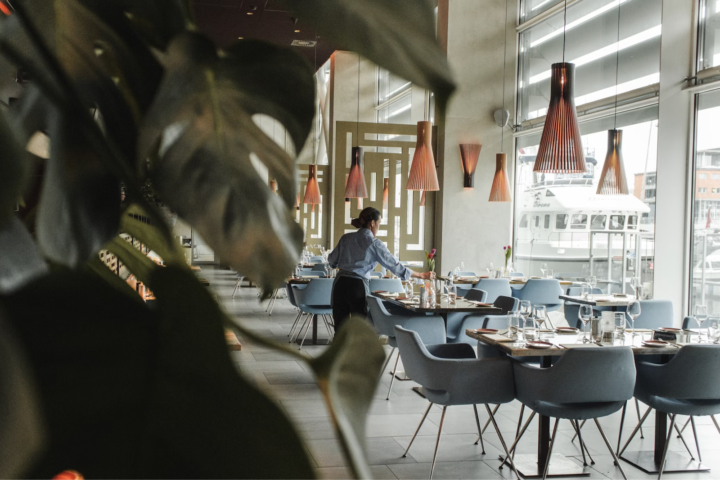Follow These Useful Guidelines And Open A Restaurant With Ease
Are you nurturing a dream of owning your very own restaurant? The prospect of serving delectable dishes, curating a warm and inviting ambiance, and nurturing a devoted clientele can be irresistibly alluring. Nevertheless, embarking on the journey of opening a restaurant from the ground up is no small feat. It necessitates meticulous planning, unwavering dedication, and a great deal of diligent effort.
But fret not! In this comprehensive guide, we will delve deep into the essential steps and provide you with invaluable insights to make your dream of opening a restaurant a reality – all with a friendly and approachable tone. So, let’s embark on this delectable journey towards your culinary aspirations!

Create a Business Plan
A well-structured business plan is akin to the North Star guiding your restaurant’s journey. It serves as a detailed roadmap, outlining your restaurant’s objectives, conducting a thorough analysis of your target market, projecting budgets and financials, and formulating effective marketing strategies. A robust business plan not only helps you secure funding but also provides a compass for decision-making as your restaurant grows.
Your business plan should include an executive summary, a description of your concept, market research, financial projections, a marketing plan, and an organizational structure. Updating your plan regularly to reflect changing circumstances and goals is a wise practice.
Location, Location, Location
The location you choose for your restaurant can significantly impact its success. When scouting for the perfect spot, consider factors such as foot traffic, proximity to competitors, accessibility for both customers and suppliers, and the demographics of the area. A prime location can draw more diners through your doors and set your restaurant apart from the competition.
Before settling on a location, conduct thorough research and, if possible, seek expert advice to ensure your choice aligns with your concept and target audience.
Legal and Regulatory Requirements
Navigating the labyrinth of legal and regulatory requirements is a vital step in the restaurant opening process. Ensure you’ve registered your business, obtained all the necessary permits and licences, and meticulously complied with health and safety regulations, including food safety training. Consult with a legal expert or regulatory authority to ensure you’re following all the rules and regulations pertinent to your restaurant’s operation.
Depending on the type of restaurant you’re opening, and the location, you might need to obtain different licenses – from basic business licenses to specialized permits. For instance, if you’re planning on serving alcohol at your restaurant in Dallas, Texas, you’ll need to obtain a liquor license. Most of the liquor license Dallas applications require an extensive background check, and the process can be lengthy. It is essential to start early and ensure you fulfill all the requirements to avoid any delays in opening your restaurant.
Design and Decor
The aesthetics of your restaurant are pivotal in creating a lasting impression on your customers. The interior design and decor should harmoniously reflect your concept and enhance the overall dining experience. It’s worth investing some time in coming up with a well-thought-out layout, as it can even increase efficiency and help you to serve customers in a more timely manner. Beyond this, investing in the right Plymold restaurant furniture (or indeed another manufacturer) can help to give your restaurant a more laid back and comfortable atmosphere if combined cohesively with other visual elements.
Consider engaging the services of a professional interior designer who can help bring your vision to life. Your restaurant’s decor should resonate with your concept, creating a captivating atmosphere that makes diners feel right at home.
Menu Development
Crafting an enticing menu is a cornerstone of your restaurant’s success. Focus on delivering top-notch quality, diverse options, and a unique culinary identity. While pricing your dishes, take into account your target audience’s preferences and budget expectations.
Menu development is not a one-time task; it’s an ongoing process that requires regular evaluation and adjustment. Don’t hesitate to conduct taste tests and gather feedback to ensure your menu consistently meets your high standards.
Staffing and Training
Your restaurant’s staff is the heartbeat of your operation. The individuals you hire can significantly impact the overall experience your customers have. Seek out experienced, reliable, and customer-focused employees who share your passion for exceptional service.
Training is a crucial step in shaping your team into a cohesive and efficient unit. Ensure that everyone understands your restaurant’s vision, menu offerings, and service standards. A harmonious and motivated team can provide excellent service that keeps diners coming back for more.
Marketing and Branding
A robust online and offline presence is vital for attracting customers. Develop a visually appealing website that showcases your restaurant’s unique personality, maintain active social media profiles, and invest in traditional advertising if it aligns with your target audience. Consistency in branding and the creation of engaging content will help you build a loyal following.
Consider conducting a pre-opening marketing campaign to generate excitement and anticipation. Engage with your community and potential customers through social media platforms and local events to create a buzz around your restaurant’s impending launch.
Inventory Management
Effective inventory management is essential for controlling costs and reducing waste. Implement systems to monitor inventory levels, optimize supply chains, and minimize food spoilage. This not only contributes to your bottom line but also ensures a consistent quality of ingredients and dishes.
An organized and efficient inventory management system will keep your restaurant running smoothly and prevent unnecessary financial losses.
Opening a restaurant is a rewarding endeavor that requires dedication, creativity, and hard work. By following these guidelines and pouring your heart and soul into your dream, you can increase your chances of success and create a memorable dining experience for your customers. Remember, patience and perseverance are essential attributes, and with the right approach, you can turn your restaurant dream into a delicious reality. Best of luck on your culinary journey!


